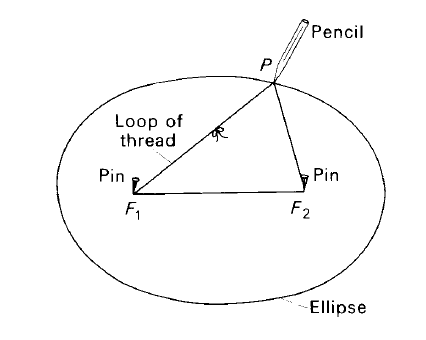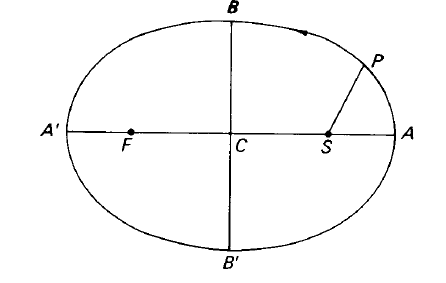
تاريخ الفيزياء

علماء الفيزياء


الفيزياء الكلاسيكية

الميكانيك

الديناميكا الحرارية


الكهربائية والمغناطيسية

الكهربائية

المغناطيسية

الكهرومغناطيسية


علم البصريات

تاريخ علم البصريات

الضوء

مواضيع عامة في علم البصريات

الصوت


الفيزياء الحديثة


النظرية النسبية

النظرية النسبية الخاصة

النظرية النسبية العامة

مواضيع عامة في النظرية النسبية

ميكانيكا الكم

الفيزياء الذرية

الفيزياء الجزيئية


الفيزياء النووية

مواضيع عامة في الفيزياء النووية

النشاط الاشعاعي


فيزياء الحالة الصلبة

الموصلات

أشباه الموصلات

العوازل

مواضيع عامة في الفيزياء الصلبة

فيزياء الجوامد


الليزر

أنواع الليزر

بعض تطبيقات الليزر

مواضيع عامة في الليزر


علم الفلك

تاريخ وعلماء علم الفلك

الثقوب السوداء


المجموعة الشمسية

الشمس

كوكب عطارد

كوكب الزهرة

كوكب الأرض

كوكب المريخ

كوكب المشتري

كوكب زحل

كوكب أورانوس

كوكب نبتون

كوكب بلوتو

القمر

كواكب ومواضيع اخرى

مواضيع عامة في علم الفلك

النجوم

البلازما

الألكترونيات

خواص المادة


الطاقة البديلة

الطاقة الشمسية

مواضيع عامة في الطاقة البديلة

المد والجزر

فيزياء الجسيمات


الفيزياء والعلوم الأخرى

الفيزياء الكيميائية

الفيزياء الرياضية

الفيزياء الحيوية

الفيزياء العامة


مواضيع عامة في الفيزياء

تجارب فيزيائية

مصطلحات وتعاريف فيزيائية

وحدات القياس الفيزيائية

طرائف الفيزياء

مواضيع اخرى
Kepler’s laws
المؤلف:
A. Roy, D. Clarke
المصدر:
Astronomy - Principles and Practice 4th ed
الجزء والصفحة:
p 166
9-8-2020
2396
Kepler’s laws
Johannes Kepler, from the study of the mass of observational data on the planets’ positions collected by Tycho Brah´e, formulated the three laws of planetary motion forever associated with his name. They are:
(1) The orbit of each planet is an ellipse with the Sun at one focus.
(2) For any planet the radius vector sweeps out equal areas in equal times.
(3) The cubes of the semi-major axes of the planetary orbits are proportional to the squares of the planets’ periods of revolution.
Kepler’s first law tells us what the shapes of the planetary orbits are and gives the position of the Sun within them.
Kepler’s second law states howthe angular velocity of the planet in its orbit varies with its distance from the Sun.
Kepler’s third law relates the different sizes of the orbits in a system to the periods of revolution of the planets in these orbits.
At the time of their formulation these laws were based upon the most accurate observational material available. The great Danish astronomer, Tycho Brah´e, had worked in the pre-telescope era of astronomy but the accuracy of his observations had been of a high standard, certainly high enough in the case of the Martian orbit to convince Kepler that the age-old idea of circular orbits had to be discarded in favour of elliptical ones.
Kepler’s laws are still very close approximations to the truth. They hold not only for the system of planets moving about the Sun but also for the various systems of satellites moving about their primaries. Only when the outermost retrograde satellites in the Solar System are considered, or close satellites of

Figure 1. Method of drawing an ellipse.

Figure 2. An elliptical planetary orbit.
a non-spherical planet, do they fail to describe in their usual highly accurate manner the behaviour of such bodies. Even then, however, they may be used as a first approximation.
We now examine them in more detail.
 الاكثر قراءة في مواضيع عامة في علم الفلك
الاكثر قراءة في مواضيع عامة في علم الفلك
 اخر الاخبار
اخر الاخبار
اخبار العتبة العباسية المقدسة

الآخبار الصحية















 قسم الشؤون الفكرية يصدر كتاباً يوثق تاريخ السدانة في العتبة العباسية المقدسة
قسم الشؤون الفكرية يصدر كتاباً يوثق تاريخ السدانة في العتبة العباسية المقدسة "المهمة".. إصدار قصصي يوثّق القصص الفائزة في مسابقة فتوى الدفاع المقدسة للقصة القصيرة
"المهمة".. إصدار قصصي يوثّق القصص الفائزة في مسابقة فتوى الدفاع المقدسة للقصة القصيرة (نوافذ).. إصدار أدبي يوثق القصص الفائزة في مسابقة الإمام العسكري (عليه السلام)
(نوافذ).. إصدار أدبي يوثق القصص الفائزة في مسابقة الإمام العسكري (عليه السلام)


















